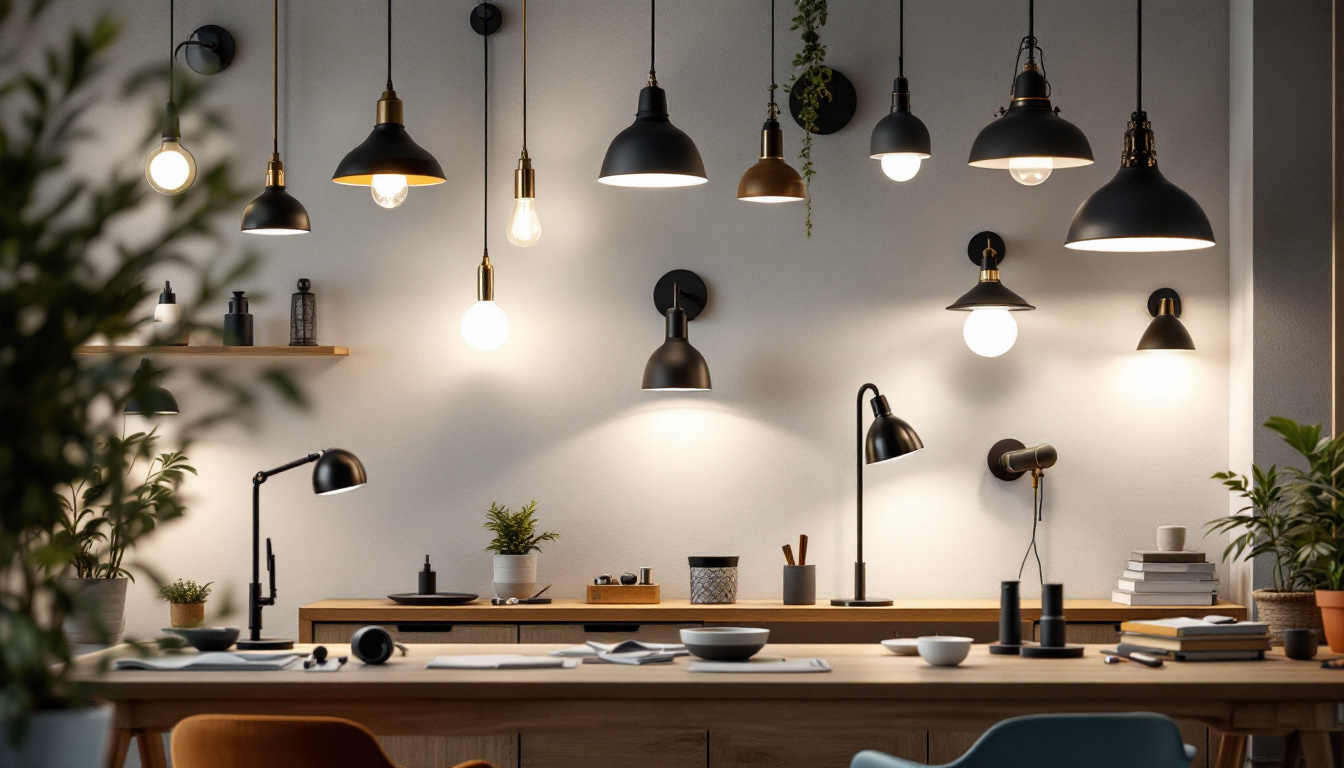
Light Emitting Diodes (LEDs) have transformed the lighting industry, becoming the go-to solution for energy efficiency, durability, and design flexibility. But who actually created the LED light bulb? Understanding the origins of this technology is crucial for lighting contractors aiming to master their craft and offer clients the best solutions.
The LED itself was first demonstrated as a practical light source by Nick Holonyak Jr., an American engineer and scientist, who developed the first visible-spectrum LED. However, the journey from a simple diode emitting light to the modern LED light bulb involved numerous innovations by various researchers and companies worldwide. The evolution included improvements in brightness, color range, and energy efficiency, culminating in the commercial LED bulbs that replaced incandescent and fluorescent bulbs in many applications.
For contractors, knowing this history isn’t just trivia—it’s a foundation for appreciating the technology’s capabilities and limitations. It also highlights the importance of continuous innovation in lighting solutions, a mindset that contractors must adopt to stay competitive.
Beyond the technical advancements, the rise of LED technology has also been influenced by environmental considerations. As concerns about climate change and energy consumption have grown, the demand for sustainable lighting solutions has surged. LEDs consume significantly less power than traditional lighting options, leading to reduced greenhouse gas emissions and lower electricity bills for consumers. This shift not only benefits the environment but also aligns with the growing trend of eco-conscious design in both residential and commercial spaces.
Moreover, the versatility of LED technology has opened up new avenues for creative lighting design. From smart home applications that allow users to control their lighting remotely to decorative fixtures that enhance aesthetic appeal, LEDs have redefined what is possible in lighting. As contractors, understanding these design possibilities can empower you to offer innovative solutions that meet the evolving needs of your clients, ensuring that you remain at the forefront of the lighting industry.
LEDs generate light through electroluminescence, a process where an electrical current passes through a semiconductor material, causing it to emit photons. Unlike traditional bulbs that rely on heating a filament or exciting gases, LEDs produce light more efficiently and with less heat.
This fundamental difference means LEDs consume significantly less power and have a longer lifespan, often tens of thousands of hours, compared to incandescent bulbs. For contractors, this translates into fewer replacements and maintenance calls, which is a strong selling point for clients. Additionally, the energy efficiency of LEDs contributes to lower electricity bills, making them an attractive option for both residential and commercial clients looking to reduce operational costs while maintaining high-quality lighting.
Modern LED bulbs include several key components: the LED chip, heat sink, driver, and lens or diffuser. The LED chip produces the light, but it generates heat that must be managed effectively to maintain performance and longevity. The heat sink dissipates this heat, preventing damage.
The driver regulates the electrical current to the LED chip, ensuring consistent brightness and protecting against voltage fluctuations. The lens or diffuser shapes the light output, providing the desired beam angle and distribution. Understanding these components not only helps contractors in troubleshooting but also empowers them to educate clients on the benefits of LED technology. For instance, contractors can explain how different types of lenses can enhance the aesthetic appeal of a space or how varying heat sink designs can impact the overall efficiency and lifespan of the bulb.
Furthermore, as LED technology continues to evolve, new components such as smart drivers and integrated sensors are becoming increasingly common. These innovations allow for features like dimming, color temperature adjustment, and even integration with smart home systems. Lighting contractors who stay informed about these advancements can offer clients cutting-edge solutions that enhance both functionality and energy savings, thereby positioning themselves as knowledgeable professionals in a rapidly changing industry.
Installing LED light bulbs might seem straightforward, but there are nuances that can affect performance and client satisfaction. First, ensure compatibility with existing fixtures. Some LED bulbs are designed to work with specific socket types or dimmer switches. Using incompatible components can cause flickering or reduced lifespan.
Proper heat management is another critical factor. Even though LEDs generate less heat than traditional bulbs, inadequate ventilation or enclosed fixtures can lead to overheating. Contractors should assess the fixture design and recommend bulbs rated for enclosed spaces when necessary. Additionally, it’s important to consider the placement of the fixtures. For instance, installing LED lights in areas with high ambient temperatures, such as near ovens or heaters, can also impact their efficiency. Therefore, careful planning and consideration of the installation environment can significantly enhance the longevity and performance of LED lighting systems.
LEDs require minimal maintenance, but regular inspections can prevent premature failures. Check for dust accumulation on heat sinks and lenses, as this can impair heat dissipation and light output. Tighten loose connections and verify that drivers are functioning correctly. Moreover, it’s beneficial to schedule periodic professional evaluations, especially in commercial settings where lighting is crucial for operations. These evaluations can identify potential issues before they escalate, ensuring that the lighting remains efficient and effective.
Contractors should educate clients on the importance of using compatible dimmers and avoiding frequent switching, which can stress the electronics inside the bulb. Providing this guidance builds trust and reduces service calls. Furthermore, clients should be informed about the benefits of smart lighting systems, which can optimize energy usage and extend the lifespan of LED fixtures. By integrating technology, clients can enjoy customizable lighting solutions that not only enhance their environment but also contribute to energy savings over time.
One of the strongest arguments for LED adoption is energy savings. LEDs use up to 80% less energy than incandescent bulbs and last significantly longer, reducing replacement costs and labor. For commercial clients, this translates into substantial operational savings over time. The longevity of LEDs means that businesses can avoid the frequent disruptions associated with changing burnt-out bulbs, allowing for a more consistent and productive work environment. Additionally, the lower heat output of LEDs reduces the load on air conditioning systems, further enhancing energy efficiency and contributing to lower utility bills.
Lighting contractors can leverage these facts by performing energy audits and offering tailored LED retrofit solutions. Highlighting the environmental benefits, such as reduced carbon footprint, also resonates with increasingly eco-conscious customers. As sustainability becomes a priority for many businesses, the shift to LED lighting not only supports their green initiatives but also enhances their brand image. By showcasing case studies of successful LED implementations, contractors can effectively illustrate the tangible benefits and positive impact on both the environment and the client’s bottom line.
In addition, many regions offer rebates and incentives for LED upgrades. Staying informed about local programs allows contractors to provide clients with financial benefits, making LED installations even more attractive. These incentives can significantly reduce the upfront costs associated with the transition to LED lighting, making it a more feasible option for businesses of all sizes. Furthermore, educating clients about the long-term return on investment (ROI) from energy savings and reduced maintenance costs can help them see the bigger picture, encouraging them to make the switch sooner rather than later. By presenting a comprehensive financial analysis, including payback periods and potential savings, contractors can build a compelling case for LED adoption that resonates with the financial decision-makers in any organization.
Smart LED lighting systems are gaining traction, offering remote control, automation, and integration with building management systems. These technologies enhance convenience, security, and energy management.
Lighting contractors should familiarize themselves with popular smart platforms and protocols, such as Zigbee, Z-Wave, and Wi-Fi-based systems. Understanding how to install and troubleshoot these solutions can open new business opportunities.
Human-centric lighting focuses on adjusting color temperature and intensity to support circadian rhythms and improve well-being. LED technology enables this flexibility, allowing dynamic lighting scenes that adapt throughout the day.
Contractors can differentiate their services by offering human-centric lighting designs, especially in healthcare, education, and office environments where lighting quality impacts productivity and health.
Despite their advantages, LEDs come with challenges that lighting contractors must navigate. One common issue is compatibility with legacy dimmer switches, which can cause flickering or buzzing. The solution involves selecting LED-compatible dimmers or advising clients to upgrade their dimming systems.
Another challenge is managing client expectations about color rendering and brightness. LEDs can vary widely in these aspects, so contractors should specify products with appropriate Color Rendering Index (CRI) and lumen output for each application.
Finally, counterfeit or low-quality LED products flood the market. Contractors must source from reputable manufacturers and verify product certifications to ensure reliability and safety.
The LED light bulb’s creation is a story of innovation and collaboration across decades, resulting in a technology that has reshaped the lighting industry. For lighting contractors, mastering LED technology is not optional-it’s essential.
By understanding the origins, technical details, installation best practices, and emerging trends, contractors can provide superior service, optimize energy savings, and meet evolving client demands. Staying informed and adaptable will ensure success in a competitive market where LED lighting continues to lead the way.
Ready to elevate your lighting projects with the highest quality LED solutions? Look no further than LumenWholesale, where we specialize in providing lighting contractors with spec-grade products at unbeatable wholesale prices. Say goodbye to local distributor markups and hello to a vast selection of reliable, high-performance lighting that meets the strictest industry standards. With the convenience of free shipping on bulk orders, you can stock up on premium lighting without any hidden fees. Make the smart choice for your business and visit LumenWholesale today to access the best value in wholesale lighting.

Discover the must-have wiring tools every lighting professional needs in their toolkit.

Discover expert insights from lighting contractors on selecting the perfect shop light fixtures.

Discover how lighting contractors can simplify home movie theater projects with expert tips on selecting the right lighting solutions.

Discover essential insights for lighting contractors in this comprehensive guide to exterior light poles.